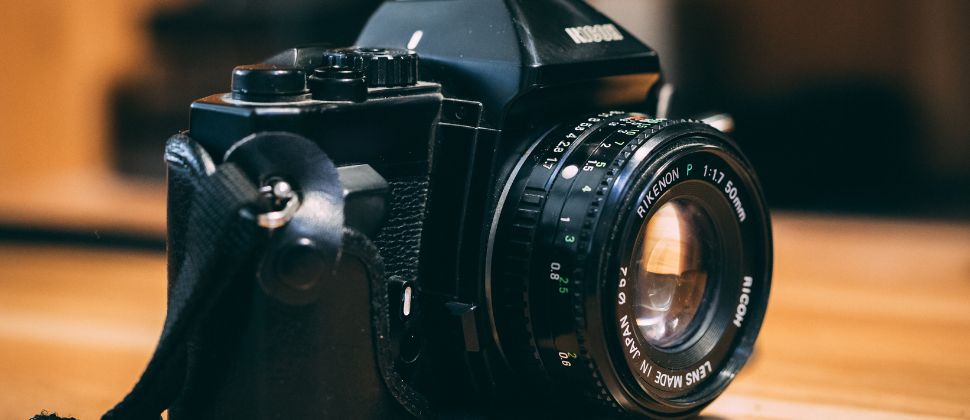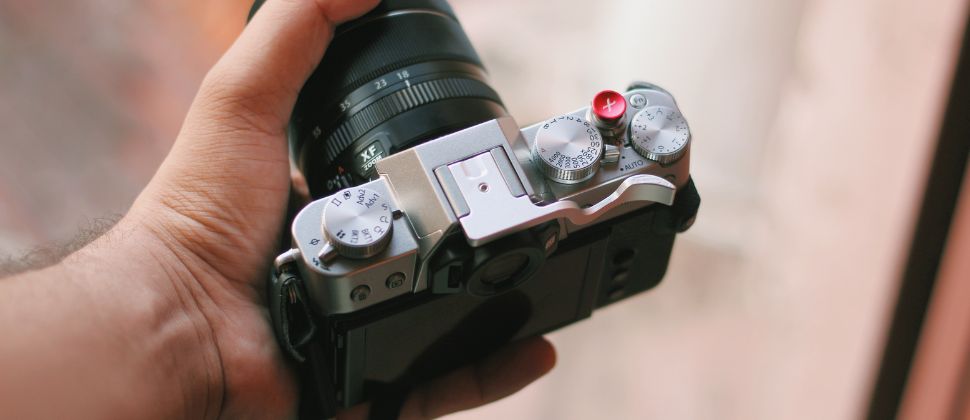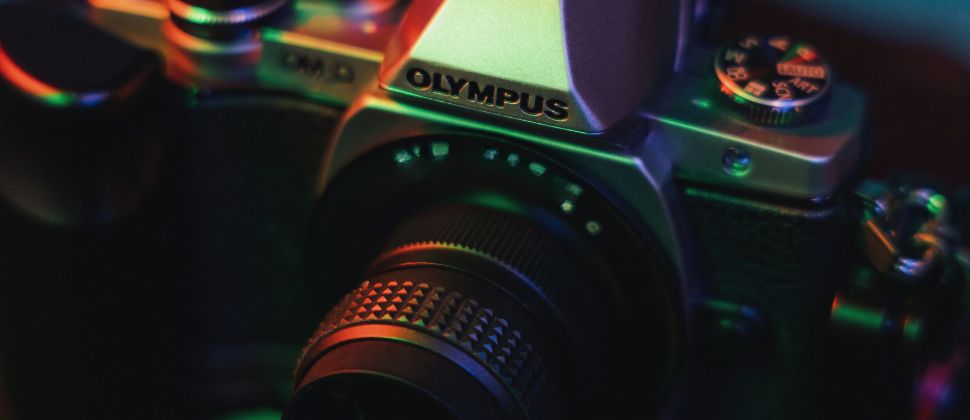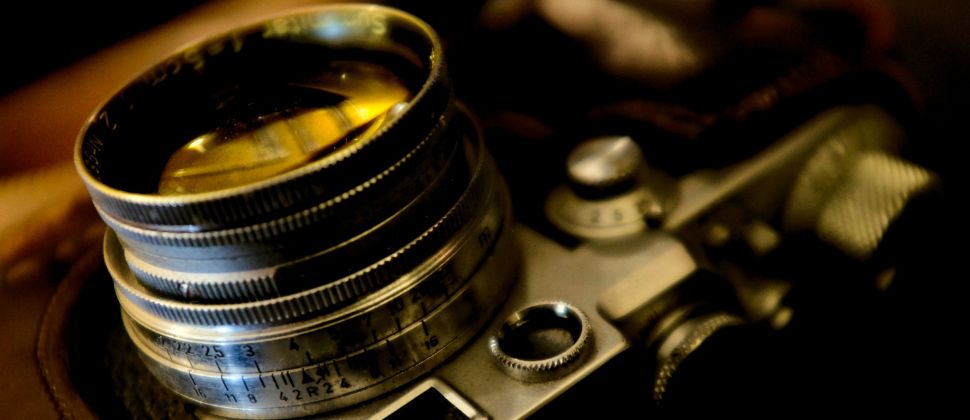Finding the best camera to boost your photography game, whether you’re a seasoned expert or an eager novice, is an exciting but difficult endeavour. With so many alternatives on the market, selecting the best camera might feel like a journey into unknown territory. Not to worry! In this detailed guide, we’ll take a journey through the world of photography, revealing the best cameras in 2023. From the classic dependability of DSLRs to the cutting-edge innovation of mirrorless miracles, we’ll look at the features, specs, and distinguishing attributes that set these cameras apart. So, if you’re ready to record life’s most precious moments with accuracy and creative flair, join us as we explore the greatest cameras that promise to change the genre.
1. Nikon Z6

Key Specifications:
- Sensor: 24.5-megapixel full-frame BSI CMOS sensor (35.9 x 23.9 mm)
- Image Processor: EXPEED 6
- ISO Range: 100-51,200 (expandable to 50-204,800)
- Autofocus System: Hybrid phase-detection/contrast-detection AF with 273 on-sensor AF points
- Continuous Shooting: Up to 12 fps with mechanical shutter, 12fps with electronic shutter (in AF-S)
- Image Stabilisation: In-body 5-axis image stabilisation (IBIS) with up to 5 stops of compensation
- Video Recording: 4K UHD up to 30fps, Full HD up to 120fps
- Viewfinder: 3.69-million-dot OLED electronic viewfinder
- LCD Screen: 3.2-inch tilting touchscreen LCD with 2.1 million dots
- Connectivity: Wi-Fi, Bluetooth, USB-C, HDMI, Microphone, and Headphone jacks
- Battery Life: Approximately 310 shots per charge (CIPA-rated)
Because of its fantastic mix of high-resolution photos and exceptional low-light performance, we have the Nikon Z6 at the top of our list. It is a wonderful choice for photography enthusiasts. Its full-frame 24.5-megapixel sensor and sophisticated EXPEED 6 image processing produce superb picture quality with little noise, even in low-light situations. The sophisticated autofocus mechanism with eye recognition on the camera provides perfect subject focus, while the 5-axis in-body image stabilisation allows for steady handheld photography. With its 4K UHD video recording capabilities and weather-sealed housing, the Nikon Z6 is a strong competitor for shooting gorgeous photographs in a variety of genres.
Nikon marked its entry into the world of full-frame mirrorless cameras in 2018. It is the ultimate all-around camera, with the ideal blend of resolution, speed, and low-light capabilities. It captures every moment in amazing clarity with a remarkable 12 fps continuous shooting speed in 12-bit RAW or JPEG format and 4K Ultra HD video capabilities with complete pixel readout. Its brightness shines in low-light situations, with a native ISO range of up to 51,200. It has a lightweight mirrorless design and a new full-frame lens mount, and it integrates seamlessly with Nikon’s DSLR system, including your favourite F-mount NIKKOR lenses. This flexible camera is built to work as hard as you do, offering unrivalled adaptability and performance that only Nikon can provide.
Reasons to Say Yes:
- Excellent Image Quality
- High ISO Performance
- In-Body Image Stabilisation (IBIS)
- Fast and Accurate Autofocus
- 4K Video Capabilities
- Robust Build Quality
- Compact and Lightweight
Reasons to Say No:
- Single Card Slot
- Limited Native Z-Mount Lens Selection
- Short Battery Life
- Limited AF Coverage in Video Mode
- No Built-in Flash
- Price
2. Canon EOS 5D Mark IV

Key Specifications:
- Sensor: 30.4-megapixel full-frame CMOS sensor (36 x 24 mm)
- Image Processor: DIGIC 6+
- ISO Range: 100-32,000 (expandable to 50-102,400)
- Autofocus System: 61-point AF system with 41 cross-type points
- Continuous Shooting: Up to 7fps with mechanical shutter
- Video Recording: 4K UHD up to 30fps, Full HD up to 60fps
- Viewfinder: Pentaprism optical viewfinder with approximately 100% coverage
- LCD Screen: 3.2-inch fixed LCD touchscreen with 1.62 million dots
- Connectivity: Wi-Fi, GPS, USB 3.0, HDMI, Microphone, and Headphone jacks
- Battery Life: Approximately 900 shots per charge (CIPA-rated)
The Canon EOS 5D Mark IV is a highly acclaimed full-frame DSLR camera that has earned a reputation among professional photographers as a dependable workhorse. And thus, we included this in our list of the best cameras at this position. It captures amazing detail and rich colours in a variety of lighting settings thanks to its 30.4-megapixel sensor. The camera’s excellent focusing technology and fast continuous shooting speed of 7 frames per second make it ideal for capturing action and fleeting moments. Its tough construction, weather sealing, and ergonomic design assure longevity and ease of use in harsh shooting conditions. Furthermore, the 5D Mark IV supports 4K video recording, making it suitable for both photographers and videographers. The Canon EOS 5D Mark IV remains a preferred choice for photographers because of its flexibility, great performance, and wide range of compatible lenses.
Reasons to Say Yes:
- Excellent Image Quality
- Advanced Autofocus
- Dual Pixel CMOS AF
- High ISO Performance
- Durable Build and Weather Sealing
- 4K Video Recording
- Extensive Lens Selection
Reasons to Say No:
- Limited Articulating Screen
- Bulky and Heavy
- Slower Burst Rate
- Expensive
- Limited Dynamic Range in 4K Video
3. Sony Alpha a7R IV

Key Specifications:
- Sensor: 61.0-megapixel full-frame Exmor R BSI CMOS sensor (35.7 x 23.8 mm)
- Image Processor: BIONZ X
- ISO Range: 100-32,000 (expandable to 50-102,400)
- Autofocus System: Fast Hybrid AF with 567 phase-detection and 425 contrast-detection AF points
- Continuous Shooting: Up to 10 fps with mechanical shutter, 10fps with electronic shutter (in silent shooting mode)
- Image Stabilisation: In-body 5-axis image stabilisation (IBIS) with up to 5.5 stops of compensation
- Video Recording: 4K UHD up to 30fps, Full HD up to 120fps
- Viewfinder: 5.76-million-dot OLED electronic viewfinder
- LCD Screen: 3.0-inch tilting touchscreen LCD with 1.44 million dots
- Connectivity: Wi-Fi, Bluetooth, USB-C, HDMI, Microphone, and Headphone jacks
- Battery Life: Approximately 670 shots per charge (CIPA-rated)
The Sony Alpha a7R IV is undeniably one of the best cameras for photography in 2023, known for its exceptional image quality and high-resolution capabilities. It captures wonderfully clear and detailed photographs with an outstanding dynamic range because of its impressive 61-megapixel full-frame sensor. It is a popular option for many types of photography because of its sophisticated autofocus technology with real-time tracking that assures accurate and dependable focus on subjects. The a7R IV’s 10 frames per second continuous shooting and user-friendly interface make it a dependable and adaptable tool for photographers, regardless of whether you’re capturing fast-paced action or shooting in difficult situations.
The Sony a7R IV not only has excellent photographic powers but also excellent filming qualities. It offers 4K video recording, producing excellently clear and detailed videos of the highest calibre. The camera’s superb autofocus mechanism guarantees clear and focused videos, while its portable design and low weight make it easy to use. The a7R IV offers versatility and ease while framing images and navigating the menu thanks to its high-resolution electronic viewfinder and tilting touchscreen.
Reasons To Say Yes:
- High-Resolution Full-Frame Sensor
- Advanced Autofocus System with Extensive AF Points
- In-Body Image Stabilisation (IBIS)
- Fast Continuous Shooting Speed
- 4K Video Recording with High Dynamic Range
- High-Quality Electronic Viewfinder
- Tilting Touchscreen LCD for Flexible Shooting
- Compact and Lightweight Design for a Full-Frame Camera
Reasons To Say No:
- Imbalance between a small body and a large lens.
- Shorter Battery Life Compared to Some Competitors
- Limited Weather-Sealing Compared to Professional DSLRs
- Menu System is Improper
4. Fujifilm X-T4

Key Specifications:
- Sensor: 26.1-megapixel APS-C X-Trans CMOS 4 sensor
- Image Processor: X-Processor 4
- ISO Range: 160-12,800 (expandable to 80-51,200)
- Autofocus System: 425-Point hybrid AF system
- Continuous Shooting: Up to 15 fps with mechanical shutter, 30fps with electronic shutter (crop mode)
- Image Stabilisation: In-body image stabilisation (IBIS) with up to 6.5 stops of compensation
- Video Recording: 4K UHD up to 60fps, Full HD up to 240fps
- Viewfinder: 3.69-million-dot OLED electronic viewfinder
- LCD Screen: 3.0-inch vari-angle touchscreen LCD with 1.62 million dots
- Connectivity: Wi-Fi, Bluetooth, USB-C, HDMI
- Battery Life: Approximately 500 shots per charge (CIPA-rated)
Whether you’re a content creator, vlogger, or anyone else in need of a reliable camera, this versatile device will prove exceptionally useful. The Fujifilm X-T4 stands out as one of the best cameras for photography in 2023, offering a versatile and feature-rich experience. With its 26-megapixel APS-C sensor and Fujifilm’s renowned film simulation modes, it produces vibrant and film-like colours that are characteristic of the brand. The X-T4 excels in image quality, capturing detailed and well-balanced shots with excellent dynamic range. One of the standout features of the X-T4 is its in-body image stabilisation (IBIS) system, which provides up to 6.5 stops of stabilisation. This feature allows for sharper handheld shots, especially in low-light situations. The camera also offers high-speed continuous shooting at up to 15 frames per second, making it well-suited for capturing fast-action scenes.
With improved face and eye identification for accurate and exact subject focus, the X-T4’s autofocus technology is very trustworthy. For street and portrait photographers in particular, this is advantageous. The camera also enables 4K video recording at up to 60 frames per second, giving videographers smooth and high-quality footage. The Fujifilm X-T4 provides a relaxing shooting experience with its vintage styling, simple controls, and sturdy build. Both an electronic viewfinder and a vari-angle touch screen are included in the camera, enabling versatile composition and simple menu navigation. Because of its small size, it’s a fantastic option for travel and outdoor photography.
Reasons To Say Yes
- Impressive Image Quality
- In-Body Image Stabilisation (IBIS)
- High-Speed Performance
- Advanced Autofocus
- 4K Video Capabilities
- Articulating Touchscreen
- Retro Design and Build Quality
- Film Simulation Modes
Reasons to Say No
- Battery Life
- Overheating during Video
- Limited Dual Card Slots
5. Olympus OM-D E-M1 Mark III

Key Specifications:
- Sensor: 20.4-megapixel Micro Four Thirds Live MOS sensor
- Image Processor: TruePic IX
- ISO Range: 200-25,600 (expandable to 64-25,600)
- Autofocus System: 121-point all-cross-type phase-detection AF system
- Continuous Shooting: Up to 15 fps with mechanical shutter, 60fps with electronic shutter (in AF-S)
- Image Stabilisation: In-body 5-axis image stabilisation (IS) with up to 7.5 stops of compensation
- Video Recording: 4K UHD up to 30fps, Full HD up to 120fps
- Viewfinder: 2.36-million-dot electronic viewfinder
- LCD Screen: 3.0-inch vari-angle touchscreen LCD with 1.037 million dots
- Connectivity: Wi-Fi, Bluetooth, USB-C, HDMI
- Battery Life: Approximately 420 shots per charge (CIPA-rated)
With its small size and outstanding image stabilisation, the Olympus OM-D E-M1 Mark III is beyond any doubt one of the best cameras for photography in 2023. It produces exceptional image quality and quick performance thanks to its 20.4 megapixel Micro Four Thirds sensor. The camera is well suited for photographing moving objects, wildlife, and sports because of its superior autofocus capabilities, which provide accurate and quick subject tracking. The unique 5-axis image stabilisation mechanism of the E-M1 Mark III is one of its most notable features. The clear, blur-free photographs produced by this technology allow handheld shooting in difficult circumstances.
Whether you’re shooting in low light or using telephoto lenses, the image stabilisation system greatly enhances the camera’s versatility and ensures consistently clear shots. The E-M1 Mark III features a rugged and weather-sealed construction, making it well-suited for outdoor and adventure photography. It offers rapid continuous shooting at up to 60 frames per second, enabling photographers to capture fleeting moments with precision. The camera also boasts a wide range of professional features, including a high-resolution electronic viewfinder and a vari-angle touchscreen, providing flexibility in composing shots and navigating menus. You can take this with you on your weekend night trips.
Reasons To Say Yes:
- Impressive Image Stabilisation
- Fast Continuous Shooting
- Advanced Autofocus System
- Weather-Sealed Build
- Compact and Lightweight Design
- Versatile Articulating LCD Screen
- High-Quality Electronic Viewfinder
- Extensive Range of Micro Four-Thirds Lenses
Reasons To Say No:
- Smaller Sensor Compared to Full Frame
- Limited Battery Life
- Fewer AF Points Compared to Some Competitors
- Limited Native ISO Range
6. Panasonic Lumix S1R

Key Specifications:
- Sensor: 47.3-megapixel full-frame CMOS sensor
- Image Processor: Venus Engine
- ISO Range: 100-25,600 (expandable to 50-51,200)
- Autofocus System: Contrast-detection and depth-from-defocus (DFD) technology with 225 AF points
- Continuous Shooting: Up to 9 fps with mechanical shutter, 6fps with continuous AF
- Image Stabilisation: In-body 5-axis image stabilisation (IS) with up to 6 stops of compensation
- Video Recording: 4K UHD up to 60fps, Full HD up to 180fps
- Viewfinder: 5.76-million-dot OLED electronic viewfinder
- LCD Screen: 3.2-inch triaxial tilting touchscreen LCD with 2.1 million dots
- Connectivity: Wi-Fi, Bluetooth, USB-C, HDMI, Headphone, and Microphone jacks
- Battery Life: Approximately 360 shots per charge (CIPA-rated)
As one of the top cameras for photography in 2023, the Panasonic Lumix S1R stands out because of its high-resolution capabilities and durable construction. It produces wonderfully detailed images with great clarity and dynamic range using a 47.3-megapixel full-frame sensor. The S1R’s high-precision autofocus mechanism guarantees accurate and dependable subject focus, making it perfect for a variety of photographic styles. The S1R’s in-body image stabilisation (IBIS) system, which offers up to 6 stops of stabilization, is one of its most notable features. This function makes it possible to photograph handheld with less camera shake, producing crisper shots, especially in low light. The camera’s outstanding continuous shooting at a rate of up to 9 frames per second makes it easy to catch those quick-paced moments.
Both still photography and videography are areas where the S1R excels. It allows for the recording of 4K video, producing footage of the highest quality with superb colour and detail reproduction. Because of the camera’s sturdy design, which includes weather sealing, it can withstand harsh shooting conditions and be trusted to perform well. The Lumix S1R offers a comfortable shooting experience because of its straightforward controls and ergonomic design. It has a vari-angle touchscreen and a high-resolution electronic viewfinder, which gives you more control over how you compose your photographs and use the menu system. Photographers’ creative options are increased by the camera’s wide array of compatible lenses.
Reasons To Say Yes:
- High-Resolution Sensor
- Robust Build Quality and Weather-Sealing
- In-Body Image Stabilisation (IBIS)
- 4K Video Capabilities with High Frame Rates
- High-Quality Electronic Viewfinder
- Triaxial Tilting LCD Screen
- Excellent Image Quality and Dynamic Range
- Extensive Lens Options with the L-mount Alliance
Reasons To Say No:
- Heavier and Bulkier Than Some Competitors
- Limited Battery Life
- Slower Autofocus in Low Light
- Limited Native Lens Selection Compared to Other Full-Frame Systems
7. Pentax K-1 Mark II

Key Specifications:
- Sensor: 36.4-megapixel full-frame CMOS sensor (35.9 x 24 mm)
- Image Processor: PRIME IV
- ISO Range: 100-819,200 (expandable to 50-819,200)
- Autofocus System: SAFOX 12 with 33 AF points (25 cross-type)
- Continuous Shooting: Up to 4.4fps
- Image Stabilisation: In-body 5-axis Shake Reduction II with up to 5 stops of compensation
- Video Recording: Full HD up to 60fps
- Viewfinder: Pentaprism optical viewfinder with 100% coverage
- LCD Screen: 3.2-inch cross-tilt LCD with 1.04 million dots
- Connectivity: Wi-Fi, GPS, USB 2.0, HDMI, Microphone, and Headphone jacks
- Battery Life: Approximately 670 shots per charge (CIPA-rated)
Unquestionably one of the greatest cameras for photography in 2023, the Pentax K-1 Mark II is recognized for its robust design and outstanding image quality. Even in difficult lighting circumstances, the 36.4-megapixel full-frame sensor creates vivid, rich images with excellent clarity. The K-1 Mark II is a strong pick for photographers who seek exceptional image quality because of its cutting-edge Pixel Shift Resolution System, which improves detail and lowers noise. The K-1 Mark II’s in-body image stabilisation (IBIS) system, which offers up to 5 stops of stabilisation, is one of its most notable features. With the use of this feature, handheld photography can be done with less camera shake, producing crisp, clear photographs.
Additional compositional assistance is provided by the camera’s flexible tilting LCD screen, particularly when shooting from low or high angles or at awkward angles. A dependable autofocus mechanism is included with the K-1 Mark II to guarantee precise and accurate subject focus. Because of its weather-sealed structure, which provides durability and peace of mind under a variety of shooting circumstances, it is appropriate for outdoor and landscape photography. The camera’s interoperability with a large selection of Pentax lenses further broadens photographers’ options in terms of their creative expression.
Reasons To Say Yes:
- High-Resolution Full-Frame Sensor
- In-Body Image Stabilisation (IBIS)
- Weather-Sealed and Durable Build
- Extensive ISO Range for Low-Light Performance
- Optical Viewfinder with 100% Coverage
- Cross-Tilt LCD Screen for Flexible Shooting
- Legacy Lens Compatibility with K-mount
- Pixel Shift Resolution for Enhanced Detail
Reasons To Say No:
- Limited Video Capabilities (No 4K)
- Slower Continuous Shooting Speed
- Fewer AF Points and Cross-Type Points Compared to Some Competitors
- Heavier and Bulkier Than Some Mirrorless Alternatives
8. Leica Q2

Key Specifications:
- Sensor: 47.3-megapixel full-frame CMOS sensor (36 x 24 mm)
- Image Processor: Maestro II
- ISO Range: 50-50,000
- Autofocus System: Contrast-detect AF with 225 AF points
- Continuous Shooting: Up to 20fps
- Image Stabilisation: Optical image stabilisation (OIS)
- Video Recording: 4K UHD up to 30fps, Full HD up to 120fps
- Viewfinder: 3.68-million-dot OLED electronic viewfinder
- LCD Screen: 3.0-inch touchscreen LCD with 1.04 million dots
- Connectivity: Wi-Fi, Bluetooth, USB-C, HDMI
- Battery Life: Approximately 370 shots per charge (CIPA-rated)
With its outstanding image quality and fine craftsmanship, the Leica Q2 is without a doubt one of the best cameras for photography in 2023. It produces breathtakingly detailed and clear photographs with exceptional clarity because of its full-frame 47.3-megapixel sensor and a quick and sharp fixed 28mm Summilux lens. The Q2’s outstanding low-light performance guarantees great image quality even in difficult lighting situations. The superb build quality and meticulous attention to detail of the Q2, which are hallmarks of Leica cameras, are among its most notable qualities.
Durability and dependability are guaranteed by the camera’s sturdy build, which was made with top-notch components. It is the ideal companion for street and documentary photography thanks to its understated appearance and small size. With its user-friendly controls and simple menu navigation, the Q2 also provides a fluid shooting experience. It offers versatility in shooting composition and image review because of its built-in electronic viewfinder and high-resolution LCD touchscreen. Additionally, photographers may shoot with assurance in a variety of weather conditions because of the weather-sealed body of the Q2.
Reasons To Say Yes:
- High-Resolution Full-Frame Sensor
- Minimalist and Elegant Design
- Fast Autofocus and High-Speed Continuous Shooting
- Built-in Optical Image Stabilisation
- 4K Video Recording Capability
- High-Quality Electronic Viewfinder
- Weather-Sealed Body for Durability
- Superb Image Quality and Dynamic Range
Reasons To Say No:
- Expensive Price Tag
- Limited ISO Range Compared to Some Competitors
- Fixed Lens with No Interchangeable Option
- Shorter Battery Life for Extended Shooting Sessions
Things To Consider While Buying the Best Cameras For Photography
When it comes to buying the best camera for photography, there are several things to consider to ensure that you make the right choice.
Firstly, you need to determine your budget and what type of photography you will be doing. If you’re on a tight budget, consider purchasing a beginner-level camera that will allow you to learn and improve your skills.
Next, consider the camera’s sensor size, resolution, and image quality. The larger the sensor, the better the image quality will be. A higher-resolution camera will allow you to capture more detail in your shots.
Additionally, consider the camera’s autofocus system and whether it has features like image stabilisation or face detection.
Another factor to consider is the camera’s lens system. The lens you choose can greatly impact the quality of your images. Consider whether you want a zoom lens or a prime lens and the focal length that would best fit your needs.
Lastly, consider the camera’s size, weight, and durability. If you plan to travel frequently with your camera, you’ll want something that is lightweight and easy to carry. Additionally, if you’ll be using your camera in harsh environments, consider one that is weather-sealed and durable.
Overall, taking the time to consider these factors will help you find the best camera for your photography needs.
Conclusion
We can expect the photography industry to continue advancing rapidly, with new camera models and technologies being introduced every year. Based on the current trends and developments, the best cameras for photography in 2023 will likely offer high resolution, superior image quality, fast processing speeds, advanced autofocus capabilities, and improved low-light performance. Whether you are a professional photographer or an amateur hobbyist, investing in a top-of-the-line camera will be crucial for capturing stunning, high-quality images in the years to come. We hope that with our suggested list of top photography cameras, you can find the one that meets all your requirements.



